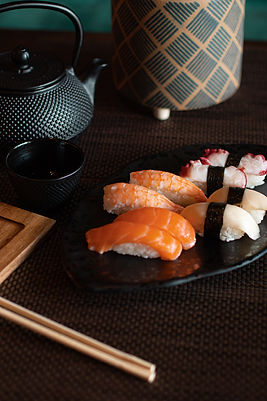Keri's Blog

Chinese Food Vs Japanese Food
Chinese and Japanese food cultures are two well-known and unique culinary traditions with the oldest history in Asian culture. To most people, Chinese and Japanese food may seem hard to distinguish, for they’re both rice based, and they all use soy sauce and tofu. China and Japan are where tea, soy sauce, rice wine, soybean, and tofu come from, and they both have a deep appreciation for fresh ingredients. Some might be easily confused due to the great resemblance they share and by the close geographical location. Despite so many similarities, there are several very important differences between Chinese and Japanese food cultures.
One of the significant differences between Chinese and Japanese food culture is the ways of flavoring. Japanese cuisine is influenced by its coastlines, so it uses seafood for many of its dishes, and it also tends to highlight more subtle flavors than Chinese food. Japanese food is usually light to the stomach. Though an exception happens when someone dabs too much Japanese wasabi on their sushi, it “wields a fierce kick.” Chinese dishes, however, depending on the region, are often flavored with spices such as Sichuan peppercorn, star anise, hot mustard, and five-spice powder. It also relies more heavily on stir-frying as a cooking method as well as using more beef, pork, and poultry for protein in addition to seafood and tofu.
The cooking methods of Chinese and Japanese food are also very different from each other. When cooking, the Chinese prepare food by using their traditional wok, which can fry ingredients by turning the item constantly so that the food is evenly cooked either from the inside or from the outside. Chinese people are quite fond of pan-frying their foods. On the other hand, the Japanese typically use their flat pans called teppan to cook items at extremely high temperatures. It’s like a grill table which allows the crisp cooking of the outside layer of the food while retaining the raw or juicy texture of the inside portion of the food being cooked. Raw foods are well accepted by the Japanese, especially with sea foods. Japanese people love to eat seafood raw. If there are uncooked food items in Chinese dishes, they must be spices like green onion and garlic among others.
Finally, there’s one specific example of the differences between Chinese and Japanese food cultures, which is tofu. The Japanese gave us silken-style tofu, the slippery soft kind that is usually floated in miso soup. Japanese tofu is mostly pale yellow and is made of eggs and milk. While the tofu of China is of a very firm, porous style, sturdy enough to stir-fry. Fermented black beans, which are black soybeans, supply a wonderfully funky flavor that goes well with a little sesame oil and chili.

Even though many people may be confused with these two types of food culture, Chinese food culture and Japanese food culture are completely different on whether flavoring or ways of cooking. The differences in food between China and Japan have a lot to do with the natural environment, and it is also related to social and cultural history. Therefore, understanding the differences between Chinese and Japanese food cultures can help the people of both sides to communicate with each other in the process of cultural exchanges, which not only helps us to have a better understanding but also respect for each other's life and culture.